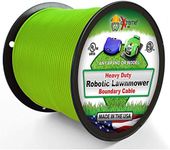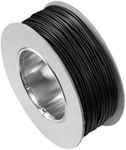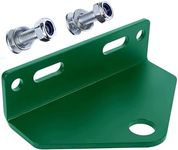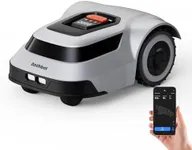Buying Guide for the Best Robotic Lawnmowers
Choosing a robotic lawnmower can make lawn care much easier and more convenient, but it's important to find a model that matches your yard and lifestyle. Start by thinking about the size and shape of your lawn, the type of grass you have, and how much time you want to spend on setup and maintenance. Robotic mowers vary in their capabilities, so understanding the key features will help you pick one that fits your needs and keeps your lawn looking great with minimal effort.Lawn Coverage AreaLawn coverage area refers to the maximum size of lawn that the robotic mower can handle, usually measured in square meters or acres. This is important because a mower designed for small lawns may not be able to keep up with a larger yard, while a model for big lawns might be overkill for a tiny patch. Coverage is often divided into small (up to 500 m²), medium (500–1500 m²), and large (over 1500 m²) segments. To pick the right one, measure your lawn and choose a mower that can comfortably cover your area, ideally with a little extra capacity for complex shapes or obstacles.
Battery Life and Charging TimeBattery life determines how long the mower can operate before needing to recharge, while charging time is how long it takes to get back to full power. These specs are important because they affect how quickly and efficiently your lawn gets mowed. Short battery life means more frequent charging, which can slow down mowing, especially on larger lawns. Battery life is usually segmented into short (under 60 minutes), medium (60–90 minutes), and long (over 90 minutes). If you have a small lawn, shorter battery life may be fine, but for larger or more complex lawns, look for longer battery life and shorter charging times to ensure the mower can finish the job in a reasonable time.
Cutting Height and WidthCutting height is the range of grass lengths the mower can achieve, while cutting width is how wide a strip the mower cuts in one pass. These specs matter because they affect the look of your lawn and how quickly the mower can finish. Cutting height is usually adjustable, with ranges like 20–60 mm, so you can choose a shorter or longer cut depending on your grass type and preference. Cutting width is often divided into narrow (under 20 cm), medium (20–25 cm), and wide (over 25 cm). For small, intricate lawns, a narrower width can help with tight spaces, while a wider width is better for large, open areas to speed up mowing.
Navigation and Obstacle DetectionNavigation and obstacle detection refer to how the mower finds its way around your lawn and avoids things like trees, toys, or garden beds. This is important for safety and for making sure the mower covers the whole lawn without getting stuck. Some mowers use boundary wires, while others use sensors or GPS. Simpler systems are fine for open, simple lawns, but if your yard has lots of obstacles or complex shapes, look for advanced navigation and obstacle detection to ensure reliable operation and less manual intervention.
Noise LevelNoise level is how loud the mower is when operating, usually measured in decibels (dB). This matters if you want to mow early in the morning, late at night, or if you have close neighbors. Noise levels are typically divided into quiet (under 60 dB), moderate (60–70 dB), and loud (over 70 dB). For most residential areas, a quieter mower is preferable, especially if you value peace and quiet or want to avoid disturbing others.
Smart Features and ConnectivitySmart features include things like app control, scheduling, integration with smart home systems, and weather sensors. These features make it easier to control and monitor your mower, even when you're not home. Some mowers offer basic scheduling, while others let you control everything from your phone. If you like convenience and want to automate as much as possible, look for models with robust smart features. If you prefer simplicity, a basic model without connectivity may be sufficient.
Safety FeaturesSafety features are designed to protect people, pets, and the mower itself. These can include lift and tilt sensors (which stop the blades if the mower is picked up), child locks, and emergency stop buttons. These are especially important if you have children or pets who might be in the yard while the mower is running. If safety is a top concern, prioritize models with comprehensive safety features.



















